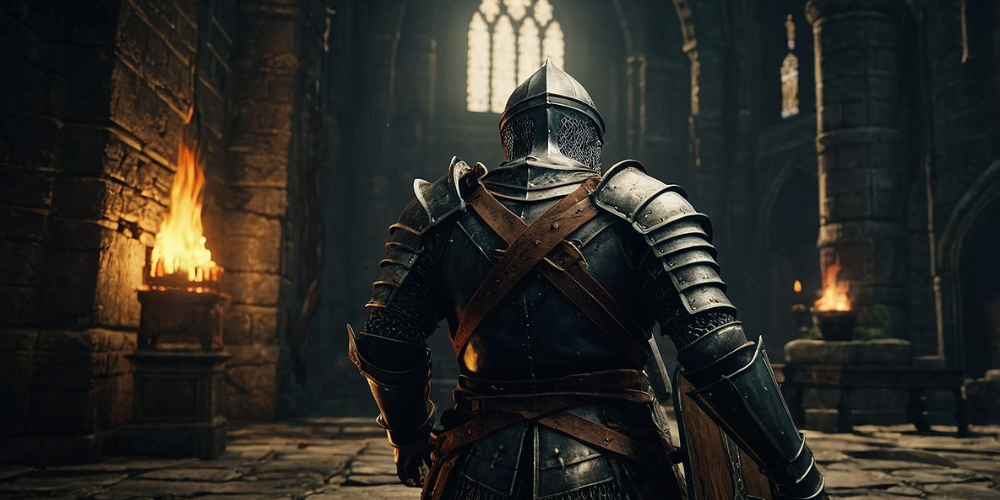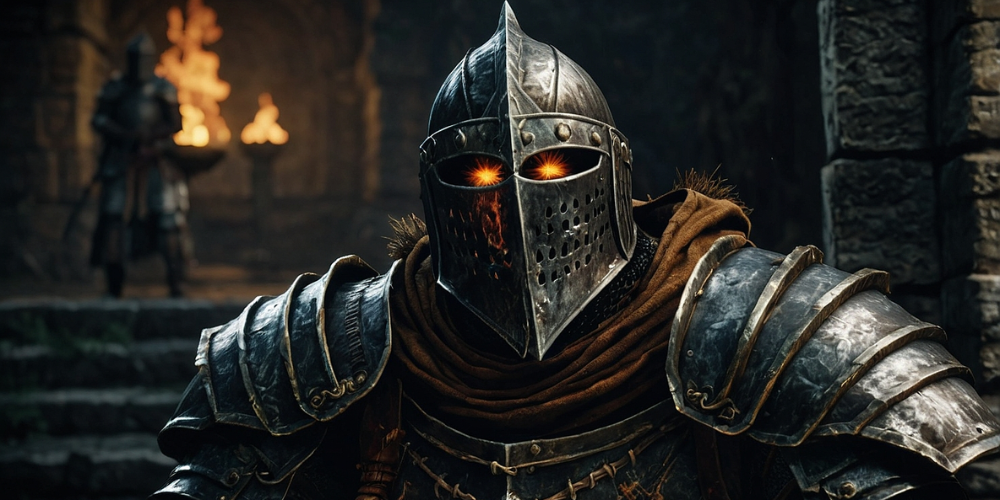Traditional vs. Modern: Combat Mechanics in Dark Souls Series
Oct-16-2024

As I ponder my experiences with the Dark Souls series, a fascinating distinction unfolds between classical and contemporary combat systems. Each installment has evolved, developing a gameplay philosophy that resonates with both veterans and newcomers. The intricate dance of dodges, swings, and tactical decisions has always been the core, but how that core is structured has shifted over time. I find myself drawn into the depths of these evolving mechanics as I delve into the series’ combat system.
The Foundation of Traditional Combat
In the original Dark Souls, I was introduced to a combat system rooted in methodical pacing. Every move felt deliberate, demanding patience and precision. Timing became my most trusted ally. I remember facing the iconic Asylum Demon for the first time; my heart raced as I learned the importance of rolling away from danger rather than spamming attacks.
Stamina Management
A defining characteristic of traditional combat mechanics was stamina management. Each swing of my weapon drained stamina, ensuring that I couldn’t just wade into battle with reckless abandon. I learned to gauge my movements carefully, reserving enough stamina for dodging or parrying. This emphasis on resource management created a rhythm in each encounter, forcing me to think critically about my actions.

The Art of Dodging and Timing
Dodging in the first Dark Souls game felt like a dance—a challenging one at that. I quickly discovered that each enemy had its own unique attack patterns. Boss battles were lessons in patience, requiring me to learn and internalize the timing of their attacks. This was paramount in my survival. The sense of accomplishment when I successfully dodged a tough attack was profound. The thrill of evasion blended seamlessly with the stakes at hand.
Weapon Variety and Weight Classes
Weapon choice also played a vital role in shaping my combat experience. Dark Souls offered a staggering variety of weapons, each with its own weight class and playstyle. I found that heavier weapons favored strong, deliberate strikes, while faster weapons allowed for quick combos. This made me feel like I could truly mold my character’s combat style, depending on the weapon I chose.
Modern Combat Mechanics Introduced in Dark Souls III
As I ventured into Dark Souls III, the evolution of combat mechanics became apparent. The developers streamlined many aspects, making the combat feel faster and more fluid. While some traditional elements remained, I noticed a shift toward a more responsive game feel. The speed of attacks increased, along with the variety of combat options available to me.
Reduced Emphasis on Stamina Management
One of the striking changes was how stamina management took a backseat in some situations. While still critical, the increased speed of combat means I could execute combos without the constant fear of exhausting my stamina. This felt liberating and allowed for a more aggressive playstyle. I was eager to test my limits, pushing advances rather than always retreating for a moment of respite.

R1 Spam vs. Skillful Combos
In the earlier games, spamming the R1 button was often a recipe for disaster. I would quickly find myself on the receiving end of a punishing counterattack. Dark Souls III taught me to weave together attacks more intelligently. Successfully chaining light and heavy attacks or mixing in special moves became my go-to strategy. The satisfaction of landing well-timed combos heightened the thrill of combat.
Weapon Arts: A New Dimension
The introduction of Weapon Arts provided an enticing new layer to combat. I remember experimenting with different weapon arts and discovering unique moves that matched my playstyle. For instance, using a straight sword allowed me to execute quick thrusts, while great weapons provided me with heavier, more devastating attacks. Incorporating these art moves shifted my approach in battles, creating diverse gameplay experiences each time I faced an opponent.
The Role of Parrying Mechanics
Parrying—the pinnacle of skillful play—witnessed slight adjustments in each iteration. I learned that the timing required for a successful parry increased in complexity but ultimately felt more satisfying when executed perfectly. The thrill of deflecting a powerful strike and ensuring an immediate riposte became a highlight of my gameplay experience.
Engaging with Multiplayer Combat
The shift toward modern mechanics also reflected in multiplayer dynamics. Engaging with other players transformed the combat landscape in both cooperative and competitive settings. Invading other players became intense encounters filled with unpredictability, forcing me to adapt quickly. I thrived on the challenge and learned to read opponents, as combat relied not only on skill but also on quick decision-making.
The Importance of Tactical Retreats
Modern mechanics enhanced the importance of tactical retreats. I discovered that I didn’t always have to stand my ground. Timing a retreat could quickly turn the tides of a battle. For instance, dancing around enemy attacks and putting space between myself and my opponent often opened up opportunities for counterattacks. This illustrated how the strategic element of combat evolved, encouraging a more thoughtful and reactive approach.

Environmental Interactions
The environments in Dark Souls are characteristically treacherous. As I engaged in combat, the landscape became an ally or foe in equal measure. The modern combat mechanics embraced this idea, allowing me to utilize the environment strategically. Pushing an enemy off a ledge or luring them into a trap introduced another layer of tactics that felt rewarding to orchestrate. The unpredictability it brought to encounters made each fight feel fresh.
Customization and Character Builds
Character customization also transitioned from traditional to modern mechanics. I delved into creating builds that emphasized my preferred combat style, whether it be strength, dexterity, or magic. This wasn’t merely limited to stats; each weapon impressed me with unique movesets. The freedom to shape my character consciously made every victory, no matter how small, feel significant.
Integration of Healing Mechanics
The evolution of healing mechanics marked another significant change. In earlier installments, I relied heavily on scarce healing items. However, in Dark Souls III, the introduction of the Estus Flask as a viable healing option encouraged riskier gameplay. I could heal in the heat of battle, though not without cost. It fundamentally altered my approach, adding another layer of strategy to encounters, as I needed to decide when to heal versus when to attack.
Dynamic Enemy AI
The advancement of enemy AI further shaped my combat experiences as I progressed through the series. Each enemy displayed unique behaviors and combat styles that required adaptability. I found that I could no longer rely solely on my previous experiences.Rather, I needed to learn and adjust to the constantly shifting characteristics of every opponent I encountered. This heightened the sense of immersion and challenge, truly testing my skills as a player.
Reading Enemy Patterns
By the time I reached the later games, I had returned to the core principle of mastering timings and patterns. While modern mechanics emphasized speed and dynamic strategies, each combat scenario still required a keen understanding of enemy behaviors. This graceful balance between the traditional foundation and new ideas made the gameplay incredibly rich and rewarding.
Conclusion: The Ongoing Evolution
As I continue my journey through Dark Souls, I am struck by how the series has grown and redefined its combat mechanics. The blend of traditional foundations and modern innovations creates a complex tapestry that keeps players like me engaged. With every encounter, I discover new layers of mechanics that challenge my abilities and push me to refine my strategy. Each experience brings with it the desire to explore further, learn more, and conquer what lies ahead.







